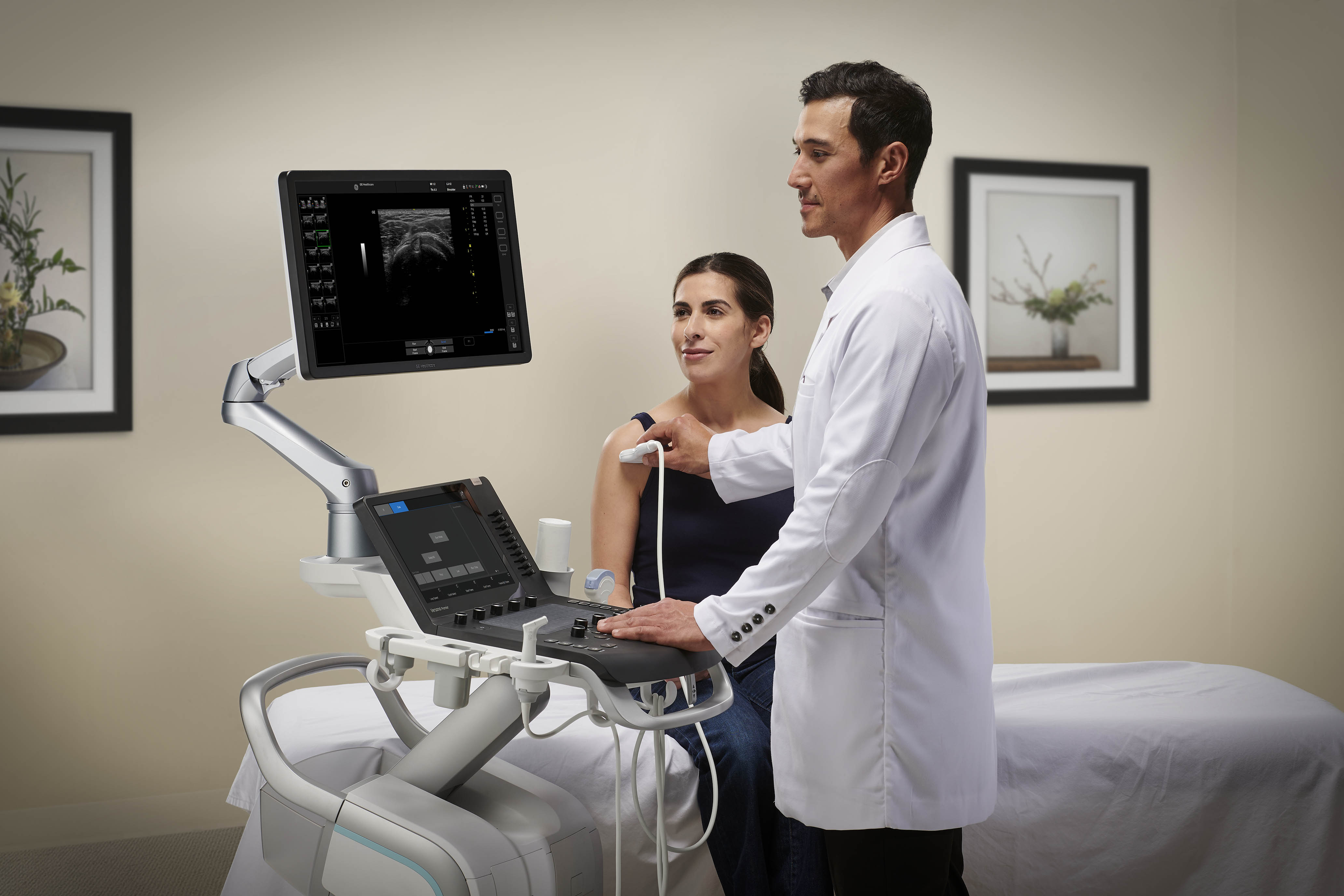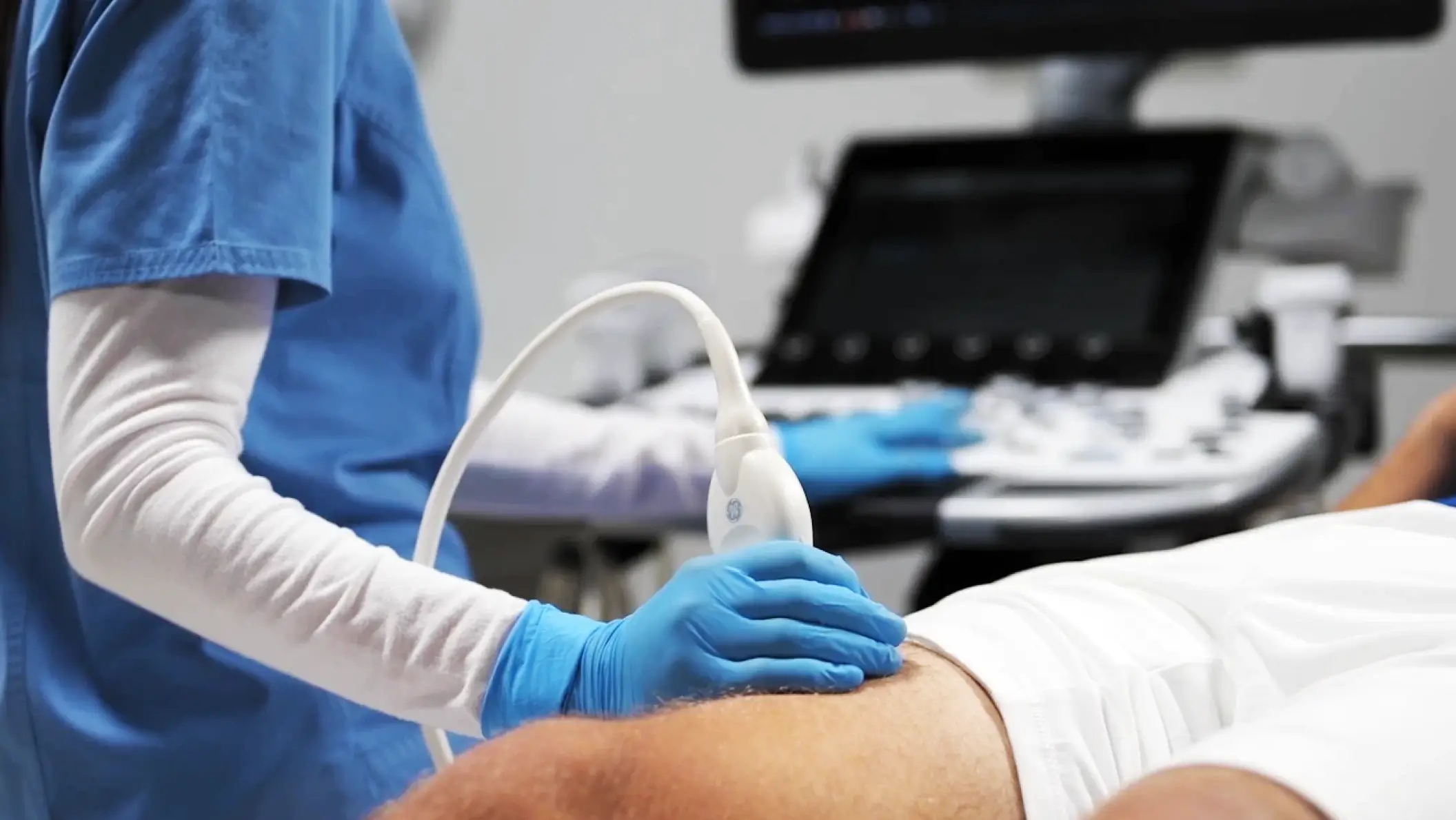The Benefits of Musculoskeletal Ultrasound in Primary Care for General Practitioners As certain types of ultrasound imaging are finding their way into primary care practices faster and easier than others, musculoskeletal ultrasound sits among the leading areas of specialization adopted by general practitioners (GPs).1 GPs and other clinicians in the primary care landscape are increasingly discovering the immense clinical, operational, and growth-focused benefits of integrating musculoskeletal (MSK) ultrasound into their practices.
Not only can primary care clinicians better centralize patient care by offering MSK ultrasound under their own roofs, but they can also achieve this with virtually no disruption to daily operations thanks to game-changing advancements in system design and functionality. Let's explore how general practitioners are utilizing MSK ultrasound to improve patient care and how easy it has become to grow your practice through these value-added diagnostic services.
A more direct pathway to MSK diagnosis
In many parts of the world, primary care physicians are readily embracing MSK ultrasound as a service and working quickly to offer it at their practices. In the Netherlands, for example, nearly 20 percent of all primary care physicians are using it to diagnose more conditions and provide a direct path to patient care.2 These conditions often include, but are not limited to, muscle tears, tendonitis, bursitis, joint problems, rheumatoid arthritis, and masses such as tumors or cysts.
Each one of these conditions is time-sensitive, and their progression, however gradual, can severely impact a patient’s quality of life. The unfortunate reality, however, is that many patients have to wait weeks or even months to get a scan from an MSK specialist. In the UK, for example, data from the National Health Service (NHS) indicates that current NHS waiting times for ultrasound guided MSK procedures range from two to three months on average.1
Whether it's a factory worker who relies on their physical job to support their family, an elderly patient who needs to stay active to maintain their mobility, a competitive athlete who needs prompt intervention so they can return to their sport, or someone living with daily pain while they wait for answers; the stakes for patients living with MSK injury are high. General practitioners have the opportunity to step in and perform scans in their own offices for faster results to enable quicker alignment of next steps for treatment.

Growth and revenue potential for in-office MSK scans
Leveraging MSK ultrasound in primary care has the potential to benefit physicians beyond the ability to improve patient care. Opening multiple avenues of care for patients directly translates to an opportunity for growth. The American College of Radiology indicates that over the past few decades, MSK ultrasound scans by non-radiologists have increased nearly 350 percent.3
While these market-share inroads have been dispersed among many other areas of specialization, general practitioners are quickly gaining ground. In one international study, for example, MSK ultrasound was the second most frequently performed exam type on male patients by primary care doctors.4
Additional data from the American College of Radiology indicates that Medicare billing for MSK ultrasound has increased by more than 315 percent over the past few years. These trends point to a clear and viable path for growth for general practitioners who integrate MSK scans into their menu of services. But it's important to choose a system that allows you to quickly adapt as you diagnose and treat patients.
In addition to safely and confidently diagnosing a wide range of MSK conditions, advancements in MSK ultrasound have also made it easier to perform image-guided injections for treatment. It's proven to be effective in a comprehensive array of injection types, including transducer-guided anesthetic and platelet-rich plasma injections and fluid removal. These injections have been found to be most effective in interventions of tendonitis, bursitis, ganglion cysts, and many others.5 Ultrasound has the advantage of real-time assessment and the ability to dynamically visualize the needle as it is reaching the target.
New technology helps GPs go MSK
The ease and speed with which general practitioners can fold ultrasound into their menu of treatment offerings has dramatically increased the emergence of new design and functionality of newer systems.6 However, it's important to choose the right option for your practice's resources, budget, staff size, expansion goals, and other factors.
Certain features can make both diagnostic imaging and injections significantly easier so even new-to-ultrasound doctors can scan with greater confidence. One of the most valuable of these features includes specific anatomic presets and high frequency probes that can safely and accurately achieve optimal imaging of hands, feet, wrists, and other parts of the body commonly impacted by MSK injuries.
Other features that enable greater speed, ease, and confidence of diagnosis include the ability to implement custom MSK exam protocols and standardized workflow, tools to easily compare current and prior images, template tools that allow doctors to create custom reports to suit global or regional standards, dynamic image optimization which allows users to scan while systems seamlessly optimize image quality, cloud-based image and report upload capabilities, and more.
From an ergonomics and resource-allocation perspective, hands-free voice commands and needle guides allow doctors to multitask during exams and injections, reducing the need for support staff from scan to scan. Many of today's system models also offer portability and maximum ease of maneuvering so they never have to permanently impact the footprint of your facility.
This maneuverability also allows doctors to take them on the go and bring them directly to the room that each patient occupies in a given interval. They are lightweight, easy to move, and offer longer-than-ever battery life for maximum on-the-go performance.
Investing in growth and expansion
Another way MSK ultrasound integration for primary care physicians has gotten easier is through comprehensive education, training, and repair services offered in many of today's systems. Initial system training helps new users hit the ground running, while robust ongoing education options facilitate continued learning of current users as well as a constant cycle of proficiency among new adopters. The ability to upgrade through simple software installation and probe additions helps you meet and adjust your evolving growth objectives without ever being boxed into your current system model.
Finally, and perhaps most importantly for smaller and resource-scarce practices, there are more flexible financing options than ever for these systems that allow you to immediately reap the benefits of MSK and other types of primary care ultrasound without eating up a large portion of your operating costs in one bite. For many primary care practices in the United States and around the world, an investment in new or upgraded ultrasound infrastructure can be cost-prohibitive. Many of today's options allow you to retain liquidity while investing in expansion.
The bottom line
MSK ultrasound is one of the most common types of ultrasound scans to integrate for general practitioners in many parts of the world. It represents an opportunity to provide an entirely new suite of diagnostic and treatment services for your practice, allowing you to reach new populations of patients, travel multiple avenues of expansion and profitability, and grow your practice at a reasonable and steady pace. It's important, however, to choose the right system to ensure that you're getting what you need for current and future objectives.
Reliable, affordable, easy-to-use and versatile, Versana ultrasound systems have a variety of automation features, intuitive controls, and budget-friendly options to best meet patient needs.
REFERENCES:
1. Bee WW, Thing J. Ultrasound-guided injections in primary care: evidence, costs, and suggestions for change. British Journal of General Practice, 2017, 67(661), 378–379. https://doi.org/10.3399/bjgp17x692117.
2. Kooijman MK, Swinkels I, Koes BW, et al. One in six physiotherapy practices in primary care offer musculoskeletal ultrasound—an explorative survey. BMC Health Services Research, 2020, 20(1). https://doi.org/10.1186/s12913-020-05119-3.
3. Kanesa-thasan RM, Nazarian LN, Parker L, et al. Comparative trends in utilization of MRI and ultrasound to evaluate nonspine joint disease 2003 to 2015. Journal of the American College of Radiology, 2017, 15(3). https://www.jacr.org/article/S1546-1440(17)31300-5/fulltext.
4. Touhami D, Merlo C, Hohmann J, et al. The use of ultrasound in primary care: longitudinal billing and cross-sectional survey study in Switzerland. BMC Family Practice, 2020, 21(1). https://doi.org/10.1186/s12875-020-01209-7.
5. Sahu AK, Rath P, Aggarwal B. Ultrasound-guided injections in musculo-skeletal system—an overview. Journal of Clinical Orthopaedics and Trauma, 2019, 10(4), 669–673. https://doi.org/10.1016/j.jcot.2019.05.013.
6. Smith M, Innes S, Wildman S, et al. A proposed framework for point of care musculoskeletal ultrasound and ultrasound image-guided interventions by physiotherapists: scope of practice, education and governance. The Ultrasound Journal, 2023, 15(1). https://doi.org/10.1186/s13089-023-00311-y.

